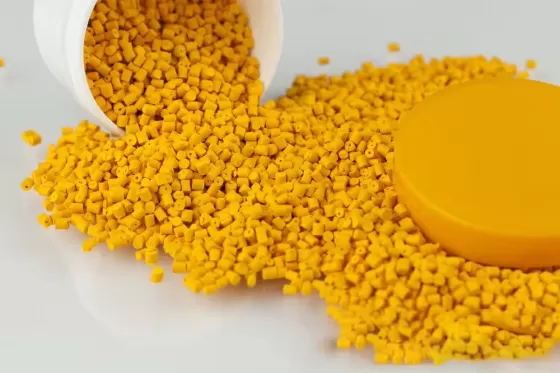

This product is made of polymer resin as base material, flame retardant, antioxidant and other additives through mixed plasticizing and granulation. It does not contain harmful substances such as heavy metals, and has excellent mechanical properties, electrical properties and wide processing temperature margin.
Flame retardant PE (polyethylene) is a material whose flame retardant properties are improved by adding flame retardants. Since pure PE has high flammability, adding different flame retardants can make it safer in certain applications. The application areas of flame retardant PE include automobiles, construction, electronics and cable manufacturing, etc., which have high requirements for the fire resistance of materials.
The flame retardant effect of flame retardant PE can be achieved through various mechanisms, including but not limited to:
Physical barrier: Flame retardants form a char layer on the surface of the material,isolating oxygen and heat.
Chemical interference: Chemical substances released by flame retardants interfere with the combustion reaction.
Diluting oxygen: Gases (such as carbon dioxide, water vapor) produced by the decomposition of flame retardants dilute the oxygen concentration in the combustion area.
In practical applications, flame retardant PE materials need to meet specific standards and regulatory requirements. For example, in the field of rail transportation, materials may need to comply with EN 45545 standards. In addition, the environmental performance of flame retardant PE materials is also increasingly valued, and halogen-free flame retardants are favored due to their lower toxicity and environmental impact.
In general, flame retardant PE is a material whose flame retardant properties are improved by adding flame retardants, and is widely used in various products that require fire safety. Selecting the right flame retardant and formulation is critical to ensuring material performance and meeting environmental requirements.
| Testing items | VALUE | Typical value | UNIT | Method |
| Density | ≤1.35 | 1.28 | g/cm3 | GB/T 1033 |
| Tensile strength | ≥12 | 15.8 | MPa | GB/T 1040.2 |
| Elongation at break | ≥200 | 250 | % | GB/T 1040.2 |
| Heat Deterioration(110±2℃,168H) | ||||
| Tensile strength retention rate | ≥70 | 105 | % | GB/T 2951.12 |
| Elongation at break retention rate | ≥70 | 90 | % | GB/T 2951.12 |
| Impact brittle temperature | ≤15/30 | 0/30 | 个 | GB/T 5470 |
| Volume resistivity | ≥1.0×1012 | 1.5×1013 | Ω·m | GB/T 1410 |
| Dielectric strength | ≥20 | 30 | MV/m | GB/T 1408.1 |
| Thermal shock | No cracking | No cracking | / | GB/T 32129 |
| Anti UV | ||||
| Change rate of tensile strength | ≤15 | 10 | % | UL1581 |
| Change rate of tensile strength | ≤20 | 14 | % | UL1581 |
| Change rate of elongation at break | ≤15 | -15 | % | UL1581 |
| Change rate of elongation at break | ≤20 | -16 | % | UL1581 |
| Single vertical combustion | Pass | Pass | / | IEC 60332-1 |
| Carbon black content | 2.6±0.25 | 2.7 | % | / |